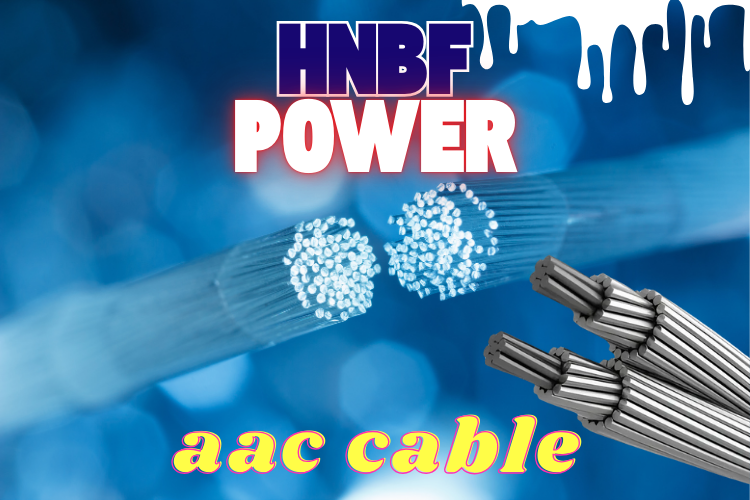When it comes to power transmission, choosing the right type of conductor is essential for efficiency, safety, and reliability. Among the most popular choices are AAC cable (All Aluminum Conductor) , AAAC (All Aluminum Alloy Conductor) , and ACSR (Aluminum Conductor Steel Reinforced) . Each cable type has its own specifications and advantages suited to specific applications. HNBFpower, a trusted manufacturer of transmission cables, offers premium-quality conductors designed to meet modern power grid demands.
Understanding AAC Cable
What is AAC Cable?
AAC (All Aluminum Conductor) is made of high-purity aluminum strands twisted together. It is lightweight, corrosion-resistant, and offers excellent electrical conductivity.
Technical Specifications
-
Material: 99.7% pure aluminum
-
Structure: Single or multi-stranded
-
Operating Temperature: Up to 80°C
-
Conductivity: Approx. 61% IACS
-
Applications: Short-distance transmission, urban distribution, and overhead lines
Advantages of AAC Cable
-
High Conductivity: Ideal for short-distance power transfer with minimal energy loss.
-
Lightweight Design: Easy to install and maintain.
-
Corrosion Resistance: Suitable for coastal or humid areas.
-
Eco-Friendly: Aluminum is 100% recyclable.
Comparing AAC with Other Transmission Cables
AAC vs ACSR
-
Strength: ACSR has a steel core, offering higher tensile strength for long spans.
-
Weight: AAC is lighter and easier to handle during installation.
-
Application: AAC is used in city grids, while ACSR suits long-distance transmission.
AAC vs AAAC
-
Composition: AAAC uses aluminum-magnesium-silicon alloy for better strength.
-
Durability: AAAC performs better in harsh environments due to higher corrosion resistance.
-
Cost: AAC is more economical, making it ideal for smaller-scale power networks.
Other Common Transmission Cables
ACSR (Aluminum Conductor Steel Reinforced)
ACSR cables combine aluminum strands with a central steel core for added strength. They are perfect for high-voltage, long-distance transmission lines.
Key Benefits:
-
Excellent mechanical strength
-
High current-carrying capacity
-
Suitable for wide river or valley crossings
AAAC (All Aluminum Alloy Conductor)
AAAC cables are made from aluminum alloy, providing both strength and conductivity. They are widely used for medium- to long-span lines.
Key Benefits:
-
Corrosion-resistant in industrial and coastal regions
-
Long service life with minimal maintenance
-
Enhanced sag performance compared to AAC
Why Choose HNBFpower Transmission Cables
HNBFpower specializes in manufacturing reliable and efficient AAC, AAAC, and ACSR conductors designed for modern electrical infrastructure. With advanced production facilities and strict quality standards, HNBFpower ensures that every cable meets global performance and safety benchmarks.
Key Strengths
-
Premium-grade aluminum and steel materials
-
ISO-certified production processes
-
Custom lengths and configurations available
-
Competitive pricing for bulk orders
How to Choose the Right Transmission Cable
When selecting a power transmission cable, consider:
-
Transmission Distance: AAC for short, ACSR or AAAC for long distances.
-
Environmental Conditions: AAAC or AAC for corrosive environments.
-
Load Capacity: ACSR for high-strength and long-span applications.
-
Budget: AAC is the most cost-effective choice.
Consult with HNBFpower’s technical team to match the correct conductor to your project requirements.
Conclusion
Selecting the right cable for electrical transmission ensures long-term performance and safety. AAC cables, along with AAAC and ACSR, each serve vital roles in the power grid. With HNBFpower, you get high-quality, tested, and dependable solutions that support efficient electricity transmission whether for city networks, rural lines, or industrial applications.
Choose HNBFpower – delivering strength, reliability, and performance in every strand.

